night is a narrow edge
Erick Alejandro Hernández
September 15th – October 28th, 2023

Press Release
“Perception does not know the concept of infinity; from the very outset it is confined within certain spatial limits imposed by our faculty of perception.”
–Albrecht Dürer in response to his contemporary Leon Battista Alberti’s treatise Della Pictura (On Painting), 1435
Although lived experience serves as the wellspring for his paintings, Erick Alejandro Hernández’s night is a narrow edge eschews meaning through the gradual addition of material that allows opposing forces of loss and tenderness / presence and absence to exist together in finite visual moments. Like the imminent exhale of a long-held breath, Hernández’s compositions are simultaneously imbued with and informed by a sense of place inextricable from loss.
Compositional strategies galvanized from Titian to de Chirico and others in between enable Hernández to effectively release each one of his images from boundaries of the stretched canvas, where they can exist in perpetual states of flux. Figures in various states of transit: severed, floating, or ringed with subtle halos stem from fragments of various histories of loss and displacement that eventually coalesce on the canvas, mirroring the artist’s own experiences with immigration at a young age.
Working iteratively and associatively to fuse form with content, Hernández places a preeminence on unflinching honest in his work, even while intuiting that an authentic portrayal of the external world is impossible to express in a two dimensional space. The vicissitudes and texture of memories are full of contradictions: both within reach, yet not present; in sight but out of recognition. Thus, Hernández’s paintings are most faithfully representations of psychic realities, not only the artists’ own but also his interpolations of intersubjective space: shared mindsets like scarcity, destabilization, resilience, and assimilation.
Language, spoken and heard is subtly interlaced throughout this exhibition. The phrase “night is a narrow edge” comes from a poem written by Hernández’s late father. A small idiosyncratic object at the focal center will be rendered minutely, in high detail, serving a function akin to a memento mori (Latin for “remember that you [have to] die”): a reminder of something that he intrinsically already knows. The parentheses in the bilingual titles’ of the paintings also compel an embrace of words in two languages, each shading the other with nuanced specificity.
As viewer, you are invited to decode Hernández’s highly crafted visual lexicon.
Erick Alejandro Hernández (b. 1994) is an artist from Matanzas, Cuba living and working in New Haven, CT. He received his BFA in Painting from Rhode Island School of Design and his MFA in Painting and Printmaking from Yale University. Hernández’s practice is invested in exploring how traditional techniques like oil painting and drawing can shift material forms in order to hold complex individual and collective histories. Revolving around overarching narratives such as a car crash or the death of a loved one, his paintings are investigative allegories exploring individual and shared experiences like grief, assimilation, and exile.
Hernández has been a fellow at Skowhegan School of Painting and Sculpture, Oxbow, Yaddo, Macdowell, Mass MoCA, and the Sharpe-Walentas Studio Program, among others. Recent group and solo exhibitions include The Mistake Room (Los Angeles, CA), Perrotin (New York, NY), Yossi Milo (New York, NY), Harper’s Books (East Hampton, NY), and Vox Populi (Philadelphia, PA).
Hernández has been a fellow at Skowhegan School of Painting and Sculpture, Oxbow, Yaddo, Macdowell, Mass MoCA, and the Sharpe-Walentas Studio Program, among others. Recent group and solo exhibitions include The Mistake Room (Los Angeles, CA), Perrotin (New York, NY), Yossi Milo (New York, NY), Harper’s Books (East Hampton, NY), and Vox Populi (Philadelphia, PA).
Installation Views














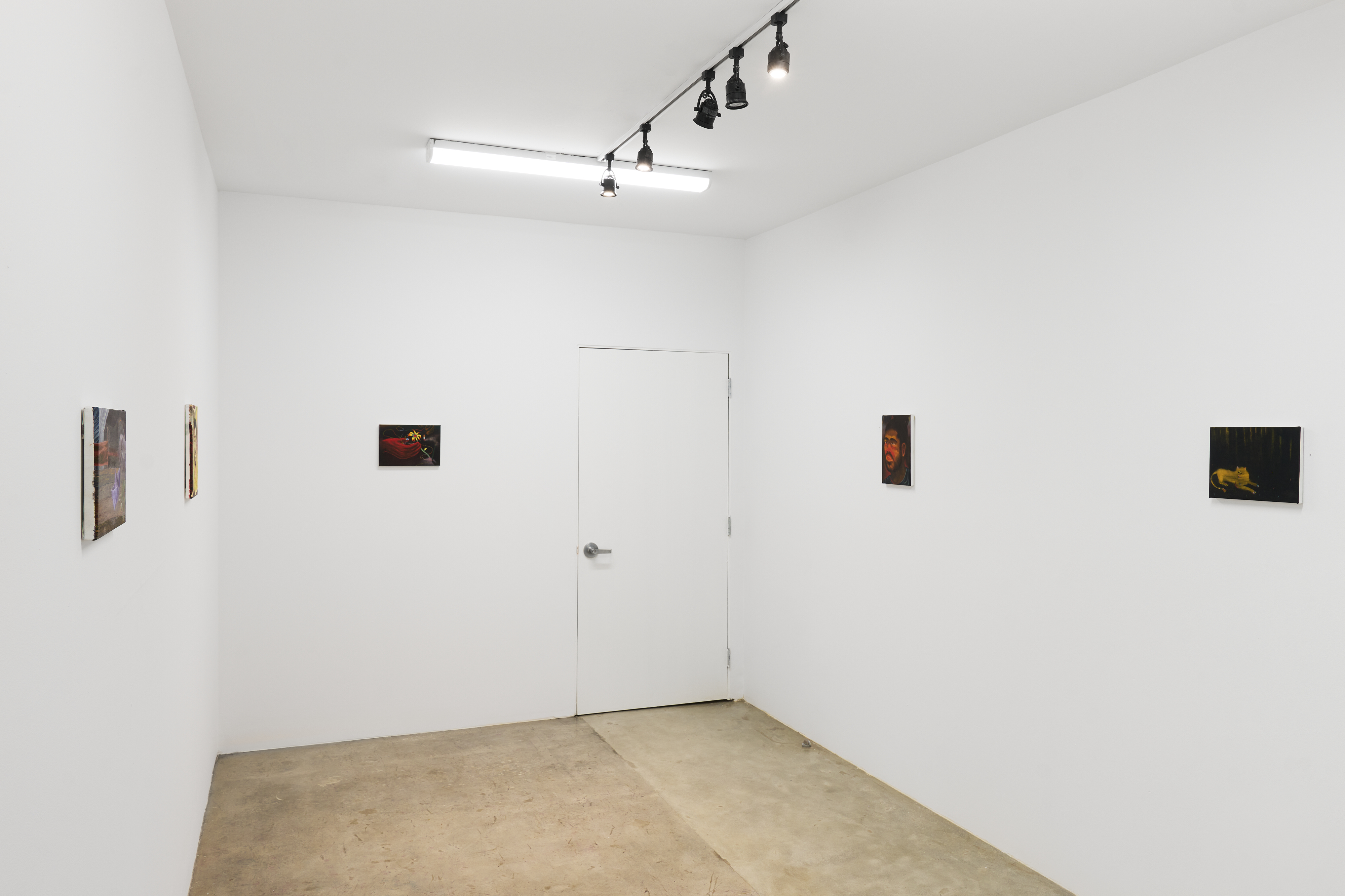


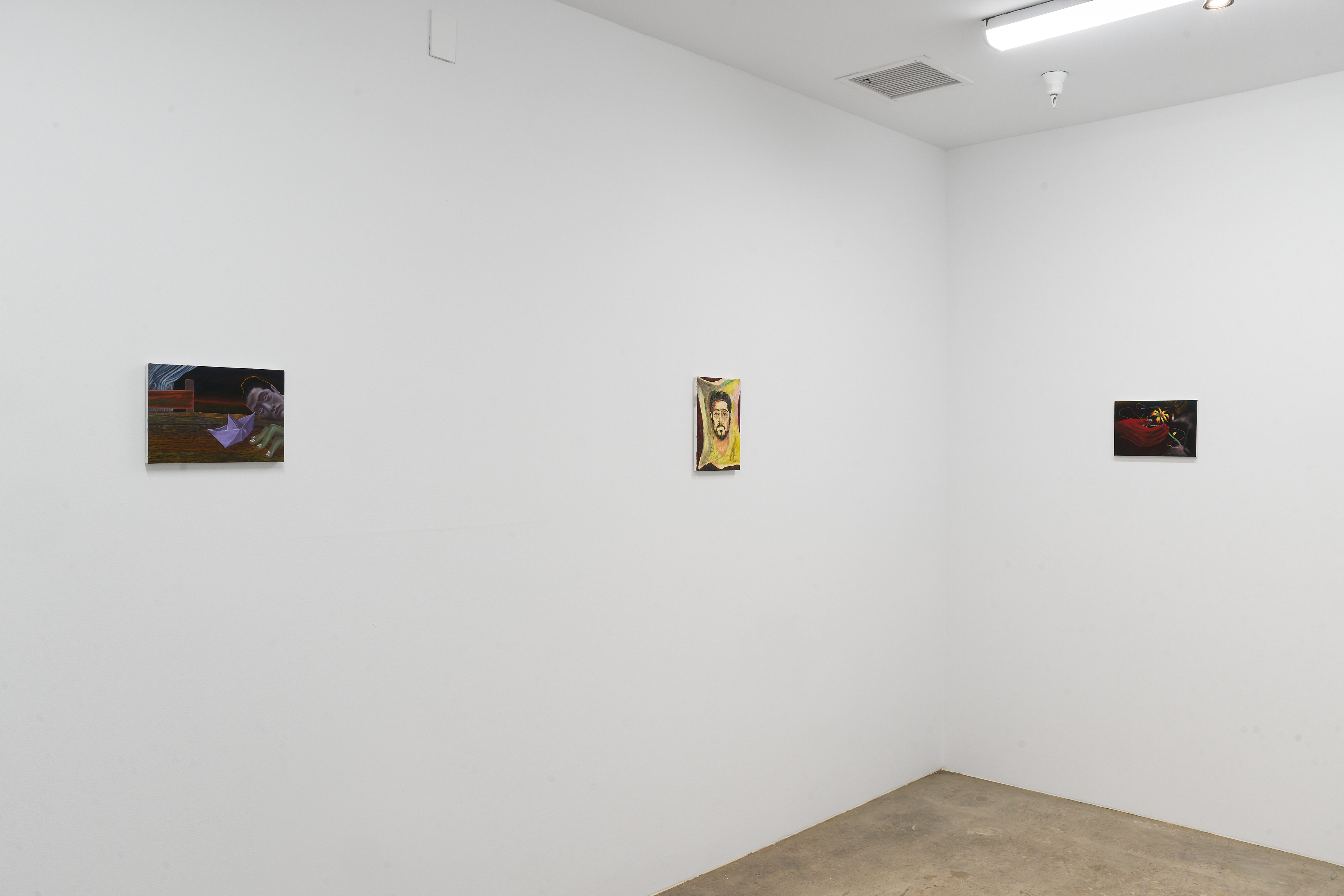

Selected Work
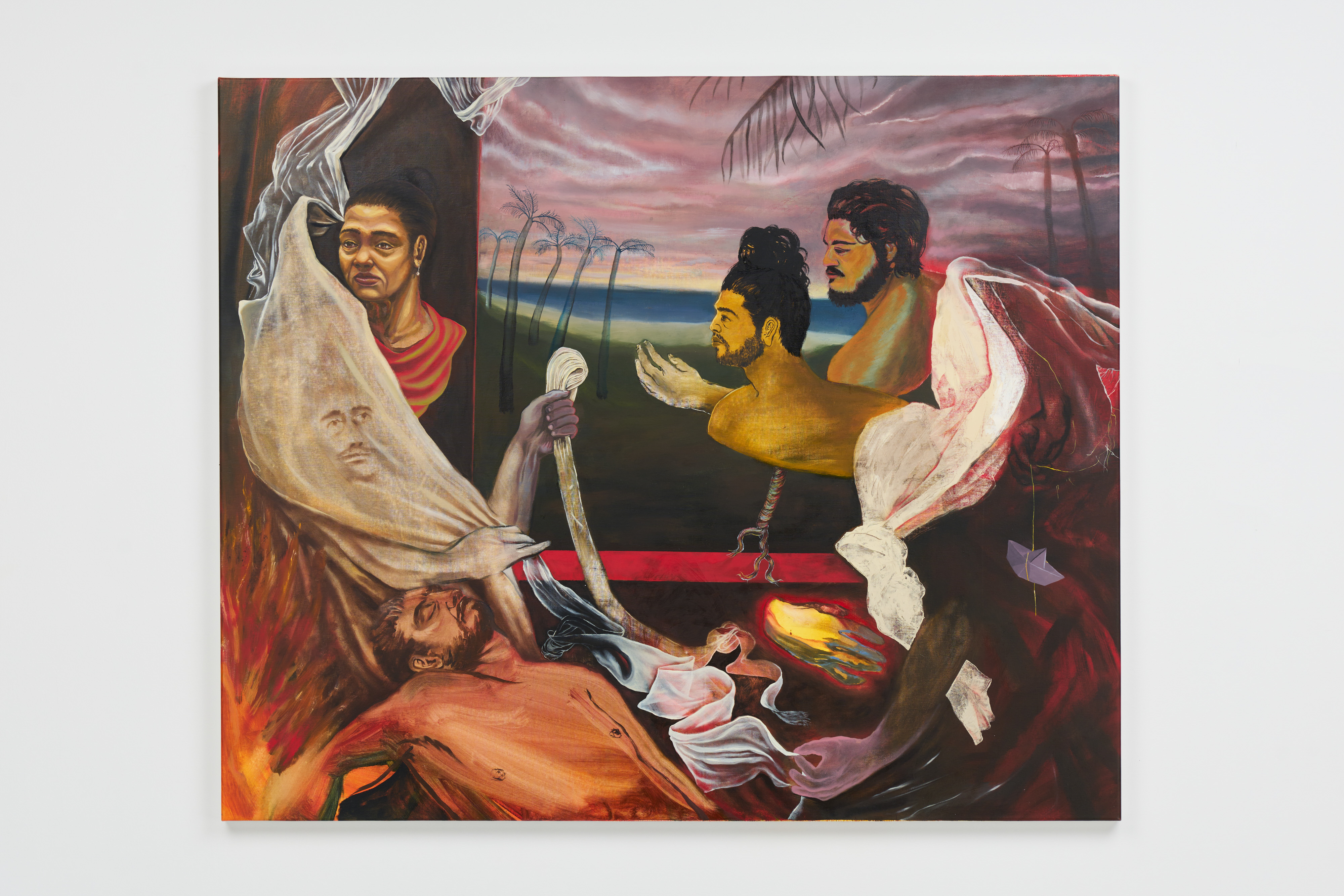 Window: the idea of air; an eye viewed from inside the skull (Hermanos), 2019
Window: the idea of air; an eye viewed from inside the skull (Hermanos), 2019Oil on Linen
48 x 60 in (121.9 x 152.4 cm)
 Mi Patria es un Papel; Is that your shadow? (Hermanos),2019
Mi Patria es un Papel; Is that your shadow? (Hermanos),2019Oil on Canvas
48 x 60 in (121.9 x 152.4 cm)
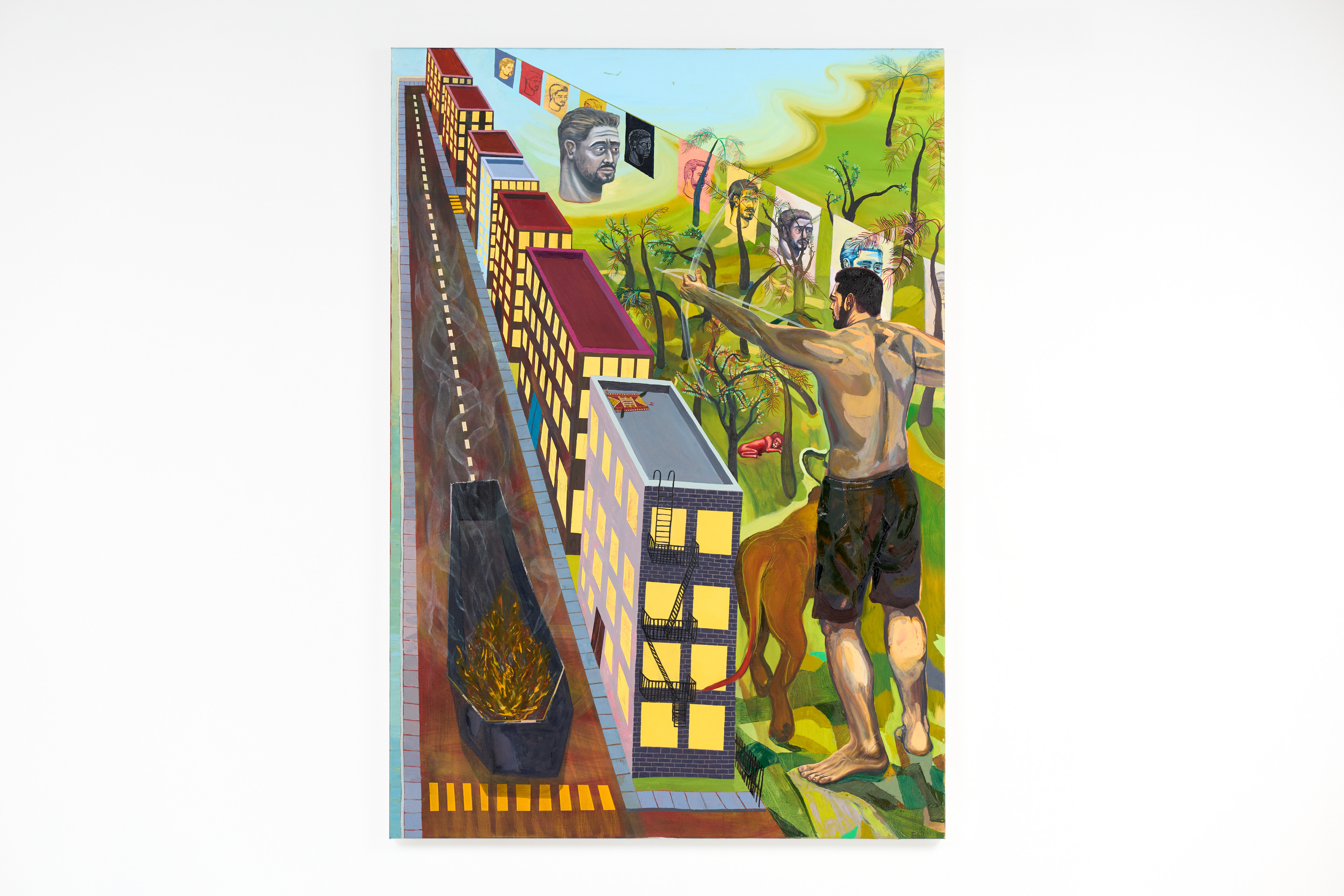
Si yo soy tu, lo mismo que tu eres yo, 2021
Oil on Canvas
84 x 58 in (213.4 x 147.3 cm)
 Final de Partida; your pain caressed in a private place, 2020
Final de Partida; your pain caressed in a private place, 2020
Oil on Linen
48 x 60 in (121.9 x 152.4 cm)
 Retrato de Familia, 2022
Retrato de Familia, 2022
Oil on Canvas
56 x 64 in (142.2 x 162.6 cm)

Platicerio; felt like the whispers of a vanishing hand, 2020
Acrylic, marker, and ballpoint on Canvas
48 x 60 in (121.9 x 152.4 cm)
 (to sleep here in cold sweat, clutching your heavy) Heads, 2019
(to sleep here in cold sweat, clutching your heavy) Heads, 2019Oil on Canvas
48 x 60 in (121.9 x 152.4 cm)
 Flor, 2019
Flor, 2019Oil on Canvas
8 x 12 in (20.3 x 30.5 cm)
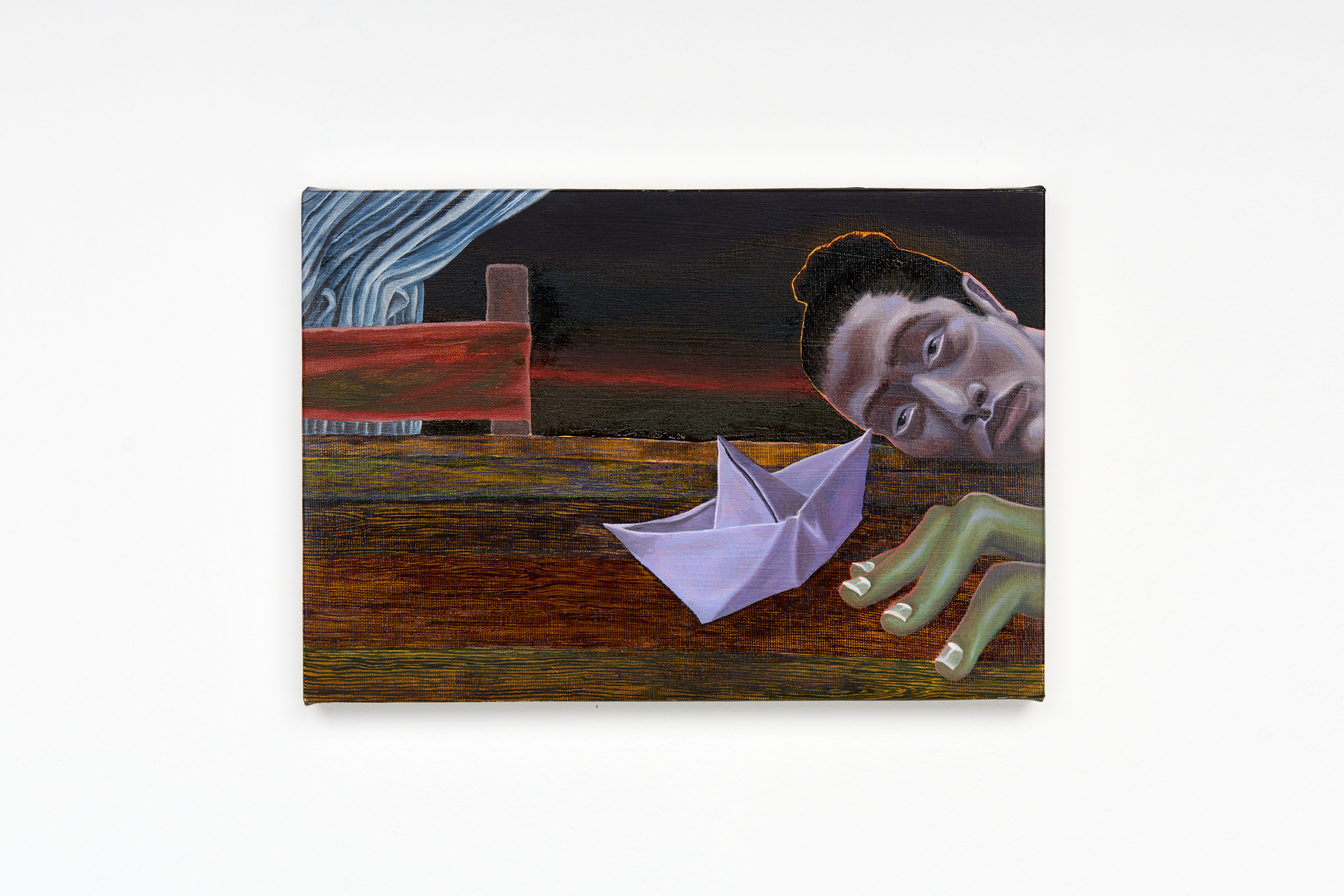
Barquito, 2023
Oil on Canvas
9 x 12 in (22.9 x 30.5 cm)
 León, 2023
León, 2023Oil on Canvas
8 x 10.5 in (20.3 x 26.7 cm)
 Autorretrato (Barcelona), 2019
Autorretrato (Barcelona), 2019Oil on Canvas
12 x 8 in (30.5 x 20.3 cm)

Cloak, 2019
Oil on Canvas
12 x 8 in (30.5 x 20.3 cm)

 Retrato de Familia; projecting an absence, 2022
Retrato de Familia; projecting an absence, 2022Oil, acrylic, ballpoint, marker, ballpoint, ink and neutral pH adhesive on Canvas
Dimensions Variable
Photos by Flying Studio (Indah Datau)


